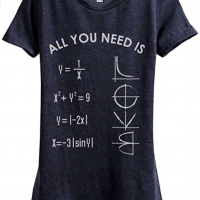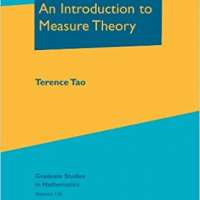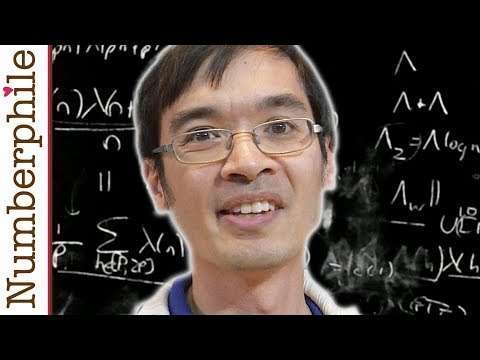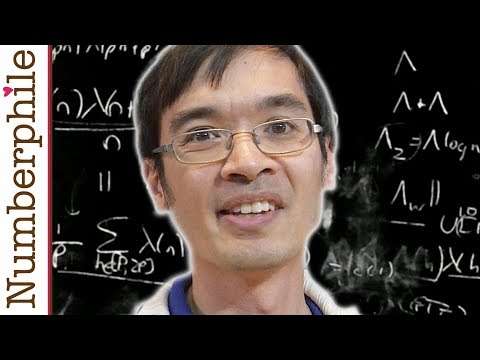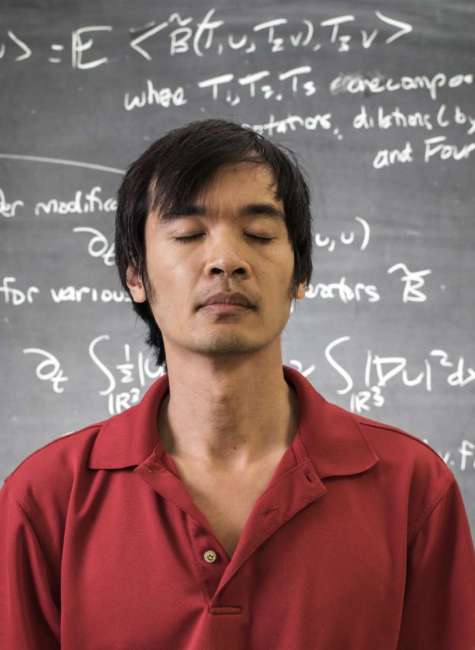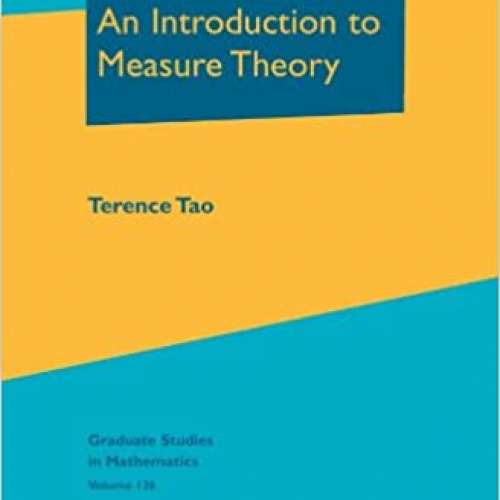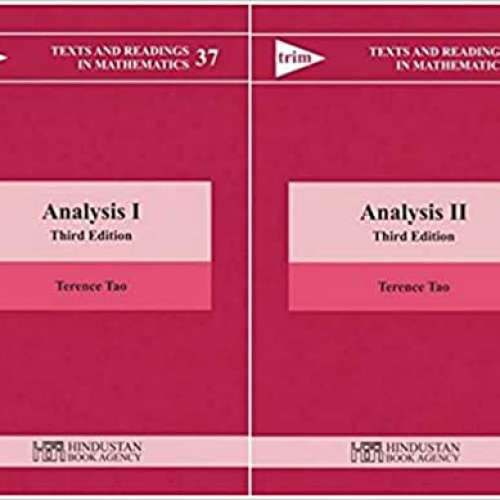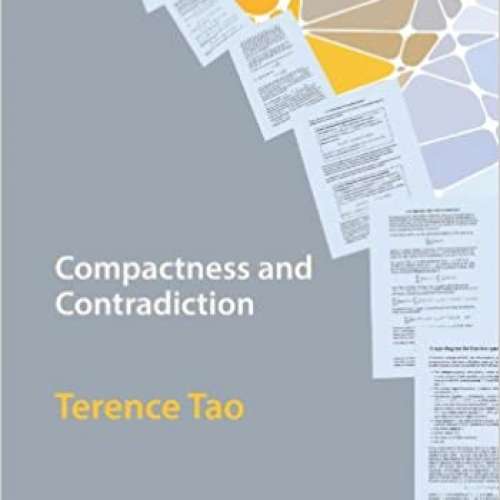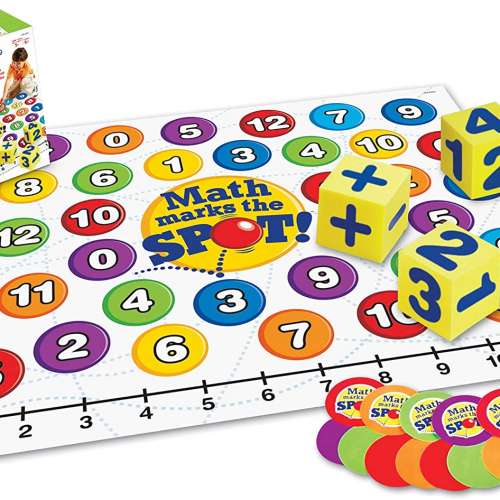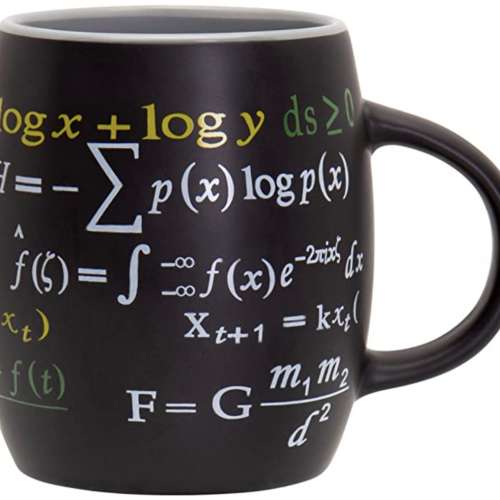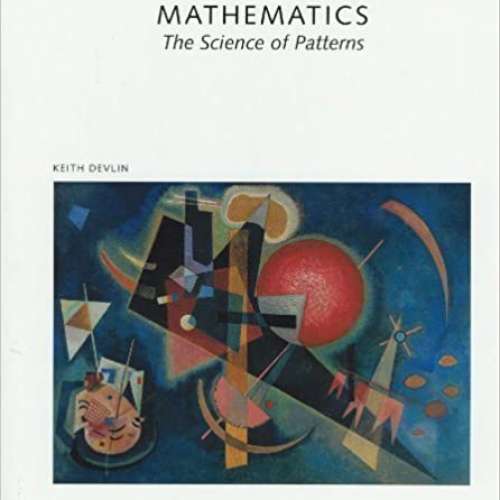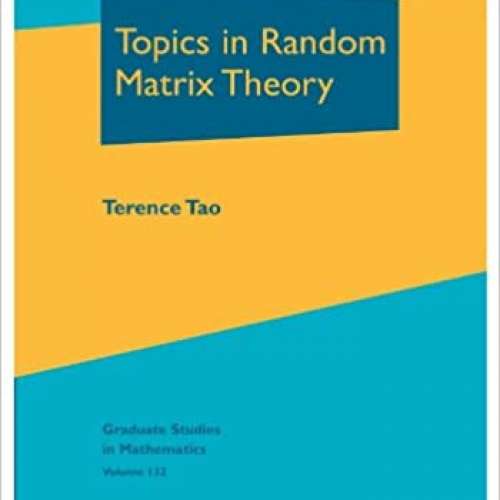

Terence Chi-Shen Tao
Terence Chi-Shen Tao is an Australian-American mathematician. He is a professor of mathematics at the University of California, Los Angeles (UCLA), where he holds the James and Carol Collins chair. His research includes topics in harmonic analysis, partial differential equations, algebraic combinatorics, arithmetic combinatorics, geometric combinatorics, probability theory, compressed sensing and analytic number theory.
He was a recipient of the 2006 Fields Medal and the 2014 Breakthrough Prize in Mathematics. He is also a 2006 MacArthur Fellow. Tao has been the author or co-author of over three hundred research papers.
Tao's parents are first-generation immigrants from Hong Kong to Australia. Tao's father, Dr. Billy Tao was a pediatrician who was born in Shanghai, China and earned his medical degree (MBBS) from the University of Hong Kong in 1969. Tao's mother, Grace, is from Hong Kong; she received a first-class honours degree in astrophysics and mathematics at the University of Hong Kong. She was a secondary school teacher of mathematics and physics in Hong Kong. Billy and Grace met as students at the University of Hong Kong. They then emigrated from Hong Kong to Australia in 1972.
Tao has two brothers, Nigel and Trevor, living in Australia. Both formerly represented Australia at the International Mathematical Olympiad.
Tao's wife, Laura, is an electrical engineer at NASA's Jet Propulsion Laboratory. They live with their son William and daughter Madeleine in Los Angeles, California.
A child prodigy, Tao exhibited extraordinary mathematical abilities from an early age, attending university-level mathematics courses at the age of 9. He is one of only two children in the history of the Johns Hopkins' Study of Exceptional Talent program to have achieved a score of 700 or greater on the SAT math section while just eight years old; Tao scored a 760. Julian Stanley, Director of the Study of Mathematically Precocious Youth stated that he had the greatest mathematical reasoning ability he had found in years of intensive searching. Tao was the youngest participant to date in the International Mathematical Olympiad, first competing at the age of ten; in 1986, 1987, and 1988, winning a bronze, silver, and gold medal respectively. He remains the youngest winner of each of the three medals in the Olympiad's history, winning a gold medal at the age of 13 in 1988.

At age 14, Tao attended the Research Science Institute. When he was 15, he published his first assistant paper. In 1991, he received his bachelor's and master's degrees at the age of 16 from Flinders University under the direction of Garth Gaudry. In 1992, he won a Postgraduate Fulbright Scholarship to undertake research in mathematics at Princeton University in the United States. From 1992 to 1996, Tao was a graduate student at Princeton University under the direction of Elias Stein, receiving his PhD at the age of 21. In 1996, he joined the faculty of the University of California, Los Angeles. In 1999, when he was 24, he was promoted to full professor at UCLA and remains the youngest person ever appointed to that rank by the institution.
Within the field of mathematics, Tao is known for his collaboration with British mathematician Ben J. Green of Oxford University; together they proved the Green–Tao theorem. Known for his collaborative mindset, by 2006, Tao had worked with over 30 others in his discoveries, reaching 68 co-authors by October 2015.
In a book review, the British mathematician Timothy Gowers remarked on Tao's accomplishments:
Tao's mathematical knowledge has an extraordinary combination of breadth and depth: he can write confidently and authoritatively on topics as diverse as partial differential equations, analytic number theory, the geometry of 3-manifolds, nonstandard analysis, group theory, model theory, quantum mechanics, probability, ergodic theory, combinatorics, harmonic analysis, image processing, functional analysis, and many others. Some of these are areas to which he has made fundamental contributions. Others are areas that he appears to understand at the deep intuitive level of an expert despite officially not working in those areas. How he does all this, as well as writing papers and books at a prodigious rate, is a complete mystery. It has been said that David Hilbert was the last person to know all of mathematics, but it is not easy to find gaps in Tao's knowledge, and if you do then you may well find that the gaps have been filled a year later.
Tao has won numerous mathematician honours and awards over the years.
He is a Fellow of the Royal Society, the Australian Academy of Science (Corresponding Member), the National Academy of Sciences (Foreign member), the American Academy of Arts and Sciences, and the American Mathematical Society. In 2006 he received the Fields Medal "for his contributions to partial differential equations, combinatorics, harmonic analysis and additive number theory", and was also awarded the MacArthur Fellowship. He has been featured in The New York Times, CNN, USA Today, Popular Science, and many other media outlets.
As of 2019, Tao has published nearly 350 research papers and 18 books. He has an Erdős number of 2.
In 2018, Tao proved bounding for the de Bruijn–Newman constant. In 2019, Tao proved for the Collatz Conjecture using probability that almost all Collatz orbits attain almost bounded values.
In 2004, Ben Green and Tao released a preprint proving what is now known as the Green–Tao theorem. This theorem states that there are arbitrarily long arithmetic progressions of prime numbers. The New York Times described it this way:
In 2004, Dr. Tao, along with Ben Green, a mathematician now at the University of Cambridge in England, solved a problem related to the Twin Prime Conjecture by looking at prime number progressions—series of numbers equally spaced. (For example, 3, 7 and 11 constitute a progression of prime numbers with a spacing of 4; the next number in the sequence, 15, is not prime.) Dr. Tao and Dr. Green proved that it is always possible to find, somewhere in the infinity of integers, a progression of prime numbers of equal spacing and any length.
For this and other work Tao was awarded the Australian Mathematical Society Medal of 2004. He was awarded a Fields Medal in August 2006 at the 25th International Congress of Mathematicians in Madrid. He was the first Australian, the first UCLA faculty member, and one of the youngest mathematicians to receive the award.
An article by New Scientist writes of his ability:
Such is Tao's reputation that mathematicians now compete to interest him in their problems, and he is becoming a kind of Mr Fix-it for frustrated researchers. "If you're stuck on a problem, then one way out is to interest Terence Tao," says Charles Fefferman [professor of mathematics at Princeton University].
Tao was a finalist to become Australian of the Year in 2007. He is a corresponding member of the Australian Academy of Science, and in 2007 was elected as a Fellow of the Royal Society. In the same year Tao also published Tao's inequality, an extension to the Szemerédi regularity lemma in the field of information theory.
In April 2008, Tao received the Alan T. Waterman Award, which recognizes an early career scientist for outstanding contributions in their field. In addition to a medal, Waterman awardees also receive a $500,000 grant for advanced research.
In December 2008, he was named the Lars Onsager lecturer of 2008, for "his combination of mathematical depth, width and volume in a manner unprecedented in contemporary mathematics". He was presented the Onsager Medal, and held his Lars Onsager lecture entitled "Structure and randomness in the prime numbers" at NTNU, Norway.
Tao was also elected a Fellow of the American Academy of Arts and Sciences in 2009.
In 2010, he received the King Faisal International Prize jointly with Enrico Bombieri. Also in 2010, he was awarded the Nemmers Prize in Mathematics and the Pólya Prize (SIAM) jointly with Emmanuel Candès for their work on Compressed Sensing.
In the 1950s, Eugene Wigner initiated the study of random matrices and their eigenvalues. Wigner studied the case of hermitian and symmetric matrices, proving a "semicircle law" for their eigenvalues. In 2010, Tao and Van Vu made a major contribution to the study of non-symmetric random matrices. They showed that if n is large and the entries of a n × n matrix A are selected randomly according to any fixed probability distribution of average 0 and standard deviation 1, then the eigenvalues of A will tend to be uniformly scattered across the disk of radius n1/2 around the origin; this can be made precise using the language of measure theory. This gave a proof of the long-conjectured circular law, which had previously been proved in weaker formulations by many other authors. In Tao and Vu's formulation, the circular law becomes an immediate consequence of a "universality principle" stating that the distribution of the eigenvalues can only depend on the average and standard deviation of the given component-by-component probability distribution, thereby providing a reduction of the general circular law to a calculation for specially-chosen probability distributions.
In 2011, Tao and Vu established a "four moment theorem," which applies to random hermitian matrices whose components are independently distributed, each with average 0 and standard deviation 1, and which are exponentially unlikely to be large (as for a Gaussian distribution). If one considers two such random matrices which agree on the average value of any quadratic polynomial in the diagonal entries and on the average value of any quartic polynomial in the off-diagonal entries, then Tao and Vu show that the expected value of a large number of functions of the eigenvalues will also coincide, up to an error which is uniformly controllable by the size of the matrix and which becomes arbitrarily small as the size of the matrix increases. Similar results were obtained around the same time by László Erdös, Horng-Tzer Yau, and Jun Yin.

In 2004, Tao, together with Jean Bourgain and Nets Katz, studied the additive and multiplicative structure of subsets of finite fields of prime order. It is well known that there are no nontrivial subrings of such a field. Bourgain, Katz, and Tao provided a quantitative formulation of this fact, showing that for any subset of such a field, the number of sums and products of elements of the subset must be quantitatively large, as compared to the size of the field and the size of the subset itself. Improvements of their result were later given by Bourgain, Alexey Glibichuk, and Sergei Konyagin.
In work published in 2008 but known since 2004, Tao and Ben Green proved the existence of arbitrarily long arithmetic progressions in the prime numbers; this result is generally referred to as the Green-Tao theorem. The source of Green and Tao's arithmetic progressions is Endre Szemerédi's seminal 1975 theorem on existence of arithmetic progressions in certain sets of integers. Green and Tao showed that one can use a "transference principle" to extend the validity of Szemerédi's theorem to further sets of integers. The Green-Tao theorem then arises as a special case, although it is not trivial to show that the prime numbers satisfy the conditions of Green and Tao's extension of the Szemerédi theorem.
In 2010, Green and Tao gave a multilinear extension of Dirichlet's celebrated theorem on arithmetic progressions. Given a k × n matrix A and a k × 1 matrix v whose components are all integers, Green and Tao give conditions on when there exist infinitely many n × 1 matrices x such that all components of Ax + v are prime numbers. The proof of Green and Tao was incomplete, as it was conditioned upon unproven conjectures. Those conjectures were proved in later work of Green, Tao, and Tamar Ziegler.
In 2012, in joint work with longtime co-author Ben Green, proofs were announced for the Dirac-Motzkin conjecture and the "orchard-planting problem" (which asks for the maximum number of lines through exactly 3 points in a set of n points in the plane, not all on a line). That same year, Tao published the first monograph on the topic of higher order Fourier analysis.
In 2014, Tao received a CTY Distinguished Alumni Honor from Johns Hopkins Center for Gifted and Talented Youth in front of 963 attendees in 8th and 9th grade that are in the same program from which Tao graduated. That year, Tao presented work on a possible attack on the Navier–Stokes existence and smoothness Millennium Problem, by establishing finite time blowup for an averaged three-dimensional Navier-Stokes equation. That year he also, jointly with several co-authors, proved several results on short and long prime gaps.
In September 2015, Tao announced a proof of the Erdős discrepancy problem, using for the first time entropy-estimates within analytic number theory.
More facts
Bôcher Memorial Prize (2002)
Clay Research Award (2003)
Australian Mathematical Society Medal (2005)
Ostrowski Prize (2005)
Levi L. Conant Prize (2005) MacArthur Award (2006)
SASTRA Ramanujan Prize (2006)
Sloan Fellowship (2006)
Fellow of the Royal Society (2007),
Alan T. Waterman Award (2008)
Onsager Medal (2008),
Convocation Award (2008)
King Faisal International Prize (2010)
Nemmers Prize in Mathematics (2010)
Pólya Prize (2010) Crafoord Prize (2012)
Simons Investigator (2012)
Breakthrough Prize in Mathematics (2014)
Royal Medal (2014)
PROSE Award (2015)
Riemann Prize (2019)
Princess of Asturias Award (2020)

